Space News
Insider
127

Image Credit: Insider
Jeff Bezos' fiancée Lauren Sánchez is headed to space alongside Gayle King and Katy Perry
- Lauren Sánchez, Jeff Bezos' fiancée, will lead an all-women space flight on a Blue Origin spaceship.
- The crew includes Gayle King, Katy Perry, Amanda Nguyen, Aisha Bowe, and Kerianne Flynn.
- The 11-minute journey will take the crew beyond the internationally recognized boundary of space.
- This marks the first all-female space crew since 1963 and the 11th human flight with Blue Origin's New Shepard program.
Read Full Article
7 Likes
Medium
186

Image Credit: Medium
The biggest fear of NASA is coming
- NASA is increasingly focusing on the risks posed by near-Earth objects (NEOs) and taking steps to defend the planet.
- Over 25,000 NEOs have been identified, with some capable of causing catastrophic damage if they were to impact Earth.
- Asteroids passing within 1.3 astronomical units of Earth are considered 'potentially hazardous,' prompting intensified tracking efforts.
- The consequences of a large asteroid impact could be global, akin to events like the one that led to the extinction of the dinosaurs.
- NASA's planetary defense team monitors thousands of objects, like asteroid YR4, to assess potential impact risks.
- While YR4 initially had a concerning probability of impact, further analysis reduced the risk significantly.
- Despite mitigation efforts for YR4, NASA continues to monitor other potentially threatening asteroids such as 2025 DN6 and 2025 DT1.
- Efforts like the Double Asteroid Redirection Test (DART) demonstrate techniques for deflecting asteroids on a collision course with Earth.
- NASA is exploring various planetary defense strategies, including potential nuclear deflection methods for larger asteroids.
- As new asteroids are discovered, NASA's commitment to early detection, understanding compositions, and testing deflection methods remains strong.
Read Full Article
11 Likes
Nasa
159
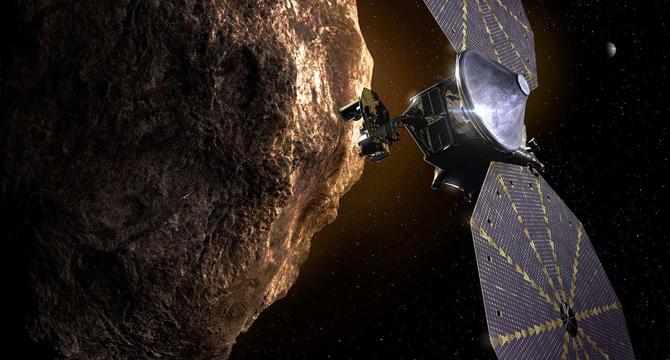
Image Credit: Nasa
NASA Selects Participating Scientists to Join Lucy Asteroid Mission
- NASA has selected eight participating scientists to join its Lucy mission to the Jupiter Trojan asteroids.
- These asteroids are remnants of our early solar system trapped on stable orbits associated with — but not close to — the planet Jupiter.
- The selected participating scientists will become mission science team members for the four major asteroid encounters that the Lucy spacecraft will have in the L4 swarm in 2027 and 2028.
- The Lucy mission is the 13th mission in NASA's Discovery Program.
Read Full Article
9 Likes
Brighter Side of News
173
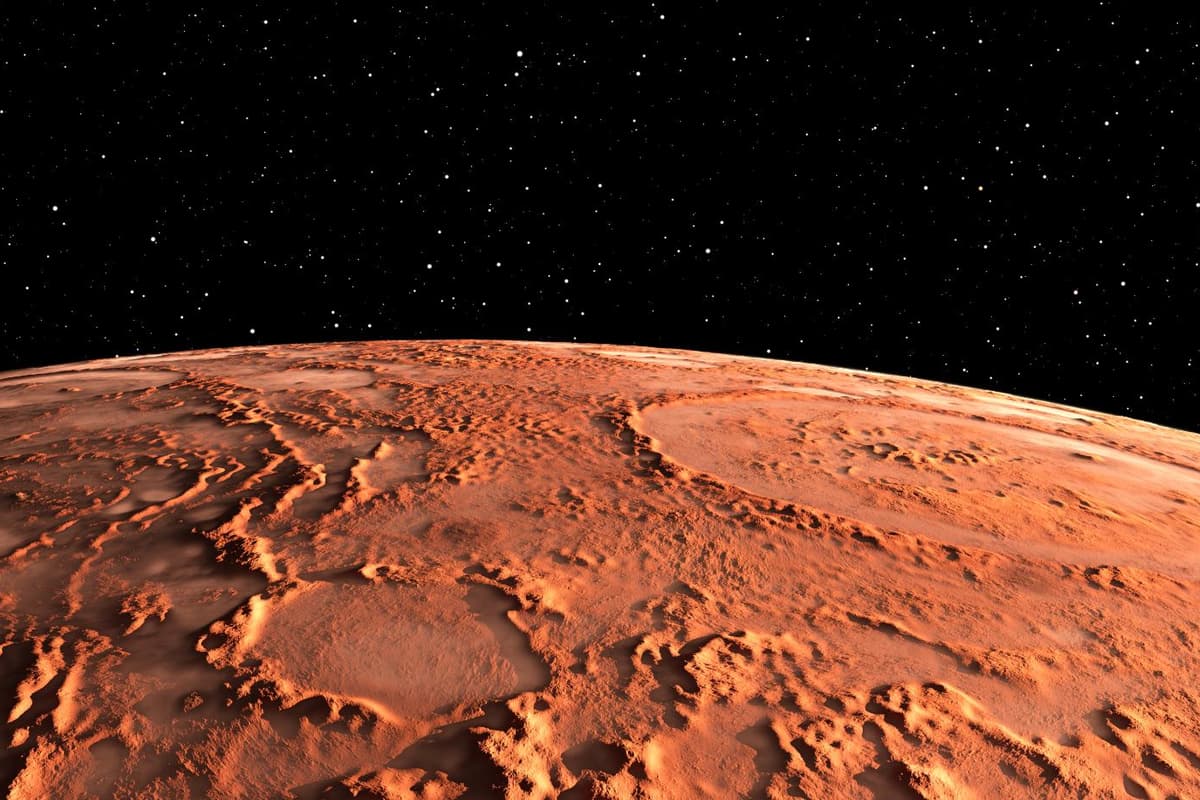
Image Credit: Brighter Side of News
Why is Mars red? Scientists may have been wrong all along
- Mars has long intrigued scientists with its red hue, thought to come from iron-rich minerals like rust on Earth.
- New research challenges the belief that hematite is responsible for Mars' color, pointing to ferrihydrite instead.
- Ferrihydrite, a mineral formed in cool water, dominates Mars' reddish dust according to a recent study.
- This suggests Mars may have had a period of water activity before becoming dry and cold.
- Data from Mars missions and laboratory simulations support the presence of ferrihydrite in Martian dust.
- The discovery of hydrogen in the dust implies water was chemically bound within the particles.
- Analysis of Martian dust composition indicates past chemical alterations involving water.
- The presence of ferrihydrite hints at conditions suitable for microbial life on ancient Mars.
- NASA's Perseverance rover is collecting samples for future return missions to further analyze Mars' dust.
- Ferrihydrite's role in Mars' reddish hue continues to spark interest, awaiting confirmation from direct sample analysis.
Read Full Article
10 Likes
Discover more
TechCrunch
123

Image Credit: TechCrunch
TechCrunch Disrupt 2025: Just 2 days left to save up to $1,130
- TechCrunch Disrupt 2025: Just 2 days left to save up to $1,130 on tickets.
- Disrupt 2025 celebrates 20 years of innovation and takes place on October 27-29 in San Francisco.
- Attendees can experience Main Stage talks, participate in breakout sessions, and network with industry experts.
- Startup Battlefield offers the opportunity to see innovative startups compete for a $100,000 prize.
Read Full Article
7 Likes
Popsci
241

Image Credit: Popsci
The best telescopes for beginners in 2025
- Standard telescopes are cool, but beginners may prefer simpler options like the Celestron StarSense Explorer DX 130AZ.
- The article presents the best telescopes for beginners, featuring models for amateur astrophotography, children, splurging, and budget options.
- Considerations like stability, ease of use, and purpose were key in selecting the best telescopes for beginners in the article.
- The Celestron StarSense Explorer DX 130AZ stands out for its guided experience using a smartphone app, ideal for beginners.
- The Koolpte 90900mm is recommended for amateur astrophotography, featuring remote picture-taking for stable shots and advanced fine-tuning options.
- For children, the Celestron FirstScope (National Park Edition) is highlighted as a user-friendly and portable choice for young stargazers.
- The Celestron NexStar 8SE is a splurge-worthy option with a Motorized GoTo Mount and DSLR camera attachment capability for advanced functionalities.
- The Celestron AstroMaster 70AZ is a budget-friendly telescope suitable for beginners, featuring a classic design and easy setup.
- Factors like magnification, optical design, mounting, setup, stability, price range, and size should be considered before buying a telescope for beginners.
- Telescopes under $500 are affordable options for beginners, offering a good starting point to explore the hobby before investing in more advanced equipment.
Read Full Article
14 Likes
Universe Today
114

Image Credit: Universe Today
Is T Coronae Borealis About to Light Up?
- T Coronae Borealis (‘T CrB’) is late to its expected brightening event, but recent research suggests an imminent outburst.
- T CrB, also known as the 'Blaze Star', is a recurrent nova that brightens once every 80 years.
- Located about 2,000 light-years away, the star typically spends most of its time below +10th magnitude.
- Although it's not expected to be the brightest star ever, its outburst will still be a rare and interesting celestial event.
Read Full Article
6 Likes
Nasa
68
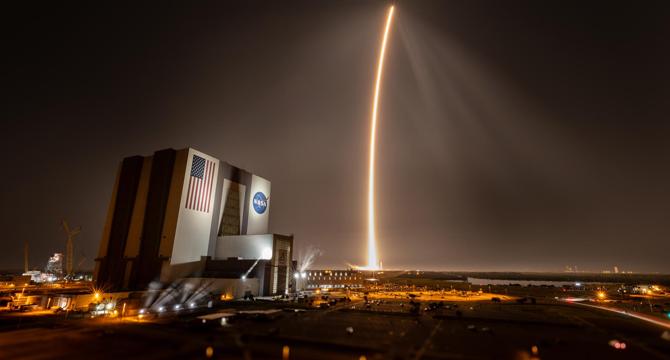
Image Credit: Nasa
Liftoff! NASA Tech, Science En Route to Moon with Intuitive Machines
- A SpaceX Falcon 9 rocket launched Intuitive Machines’ Nova-C lunar lander and NASA’s Lunar Trailblazer from Kennedy Space Center, aiming to advance lunar exploration and future crewed missions.
- The IM-2 mission is part of NASA’s CLPS initiative, delivering technology and science demonstrations to Mons Mouton on the Moon's South Pole.
- NASA's acting Administrator highlighted the significance of these missions in expanding capabilities and preparing for future lunar exploration and missions to Mars.
- NASA's CLPS investigations aim to study potential lunar soil volatiles and deploy a Laser Retroreflector Array for spacecraft reference on the lunar surface.
- The Lunar Trailblazer spacecraft will map water distribution on the Moon to support future human and robotic missions while contributing to understanding planetary water cycles.
- Included in the IM-2 mission payloads are experiments like PRIME-1 for lunar resource analysis, Laser Retroreflector Array for precise laser ranging, and Micro Nova Hopper for lunar surface surveying.
- Nokia's Lunar Surface Communications System will demonstrate cellular communications for future Moon infrastructure.
- These advancements align with NASA's Artemis campaign, focusing on planetary exploration, water resource discovery, and sustainable human missions.
- The IM-2 mission signifies progress in science and technology demonstrations for lunar exploration and future space missions.
- For more information on NASA's CLPS initiative, visit https://www.nasa.gov/clps.
Read Full Article
4 Likes
Medium
323

Image Credit: Medium
The History and Evolution of Spacesuits
- The history and evolution of spacesuits can be traced back to high-altitude pressure suits developed for military pilots in the 1930s and 1940s.
- During the Gemini program, NASA developed the Gemini G4C suit, enabling astronauts to perform the first American spacewalks.
- The Apollo missions marked a major leap in spacesuit design with the Apollo A7L suit, allowing astronauts to walk on the Moon.
- As space exploration continues to advance, new spacesuits like NASA's xEMU and commercial spaceflight companies' innovative designs are being developed for future missions to the Moon, Mars, and beyond.
Read Full Article
19 Likes
Brighter Side of News
209
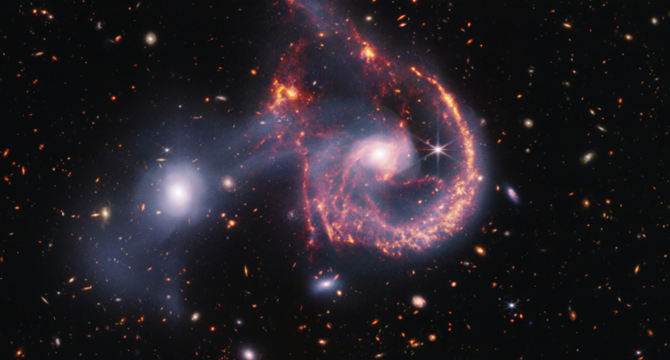
Image Credit: Brighter Side of News
Previously unseen phenomenon spotted in galaxy 12.9 billion light-years away
- The James Webb Space Telescope has revolutionized the study of the universe by detecting near-infrared light, unveiling details of distant galaxies previously considered unobservable.
- Recent findings have not only mapped ancient galaxies' structures but also revealed unique features that challenge existing models of early cosmic development.
- One galaxy, 12.9 billion light-years away, dubbed GS-NDG-9422, displays a peculiar light pattern where gas shines brighter than stars, indicating a rare transitional stage in galaxy evolution.
- Spectral data analysis of GS-NDG-9422 suggests stars with temperatures exceeding 140,000 degrees Fahrenheit, significantly hotter than those typically observed.
- The presence of a Balmer jump in 9422's spectrum, a phenomenon indicating high-energy young stars influencing surrounding gas, adds to its uniqueness at high redshifts.
- Extreme temperatures in 9422 enable less common emissions such as two-photon and free-bound emissions to rival or surpass stellar light, providing insights into the galaxy's extraordinary nature.
- Galaxy 9422's exotic stellar populations may help understand the transition of galaxies from primordial to familiar forms, shedding light on the universe's early evolution.
- The study of 9422 in the Monthly Notices of the Royal Astronomical Society explores its potential brief, intense phase of star formation that outshines its stellar emissions.
- Astronomers are investigating if similar conditions in 9422 exist in other early universe galaxies, aiming to reshape our comprehension of cosmic history's first billion years.
- The quest for new discoveries with the James Webb Space Telescope in this inaccessible time in the universe points towards exciting times ahead for cosmic exploration.
Read Full Article
12 Likes
Livescience
410
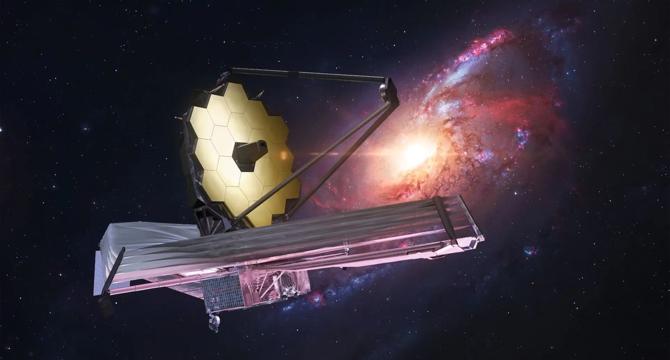
Image Credit: Livescience
'It's extremely worrisome.' NASA's James Webb Space Telescope faces potential 20% budget cut just 4 years after launch
- NASA's James Webb Space Telescope is facing potential 20% budget cuts midway through its primary mission, despite high demand from astronomers.
- The budget cuts would impact all aspects of the observatory's operations, managed by the Space Telescope Science Institute.
- The mission has been asked to prepare for significant operational budget cuts starting later this year.
- The $25.4 billion budget for 2025 includes funds for the Webb, Hubble, and Chandra observatories, with potential cuts for Hubble as well.
- Unlike Hubble and Chandra, Webb, which launched in 2021, is in its prime and could last 20+ years.
- Webb has exceeded expectations since its launch, making significant discoveries and delivering cutting-edge science.
- The potential cuts may affect the telescope's ability to perform science, review proposals, data analysis, and engage with the scientific community.
- Operational costs set low in 2011, coupled with higher inflation rates and funding constraints, have contributed to the budget challenges.
- NASA's Webb telescope has been hailed for fulfilling its promise, observing distant galaxies and exoplanets with outstanding performance since launch.
- Under the proposed cuts, impacts across the mission's operations may be felt as early as October, affecting various teams and observatory functions.
Read Full Article
24 Likes
Insider
392

Image Credit: Insider
Rolls-Royce stock hits record high after meeting profit targets 2 years early
- Rolls-Royce shares surged after meeting profit targets two years ahead of schedule in its annual results.
- Revenue rose 16% to £17.8 billion, surpassing analyst estimates of £17.3 billion.
- Rolls-Royce announced a £1 billion share buyback, boosting investor confidence.
- Stock rose almost 20% to a record high, valuing Rolls-Royce at £64 billion.
Read Full Article
23 Likes
Astronomynow
159

Sights on a new flyby for New Horizons
- NASA's New Horizons spacecraft, after its close flyby of Arrokoth in 2019, has detected high dust levels, suggesting an extended Kuiper Belt or a possible second one.
- Ground-based telescopes are searching for additional Kuiper Belt Objects (KBOs) for New Horizons to explore, reinforcing the idea of a larger Kuiper Belt.
- Scientists plan to use the upcoming Vera Rubin Observatory and NASA's Roman Space Telescope to continue the search for a new flyby target in the late 2020s or 2030s.
- New Horizons has enough fuel and power to operate until the 2040s and is expected to cross the termination shock, reaching interstellar space in the near future.
Read Full Article
9 Likes
Medium
360

MISSION TO MARS 49 missions by 9 nations have been attempted to Mars since 1960.
- 49 missions by 9 nations have been attempted to Mars since 1960.
- Mars is about half the size of Earth and the moon is about half the size of Mars.
- Venus and Mars are the most like Earth among all the planets in the solar system.
- Approximately 70% of the Earth is covered with water.
Read Full Article
21 Likes
Digitaltrends
104
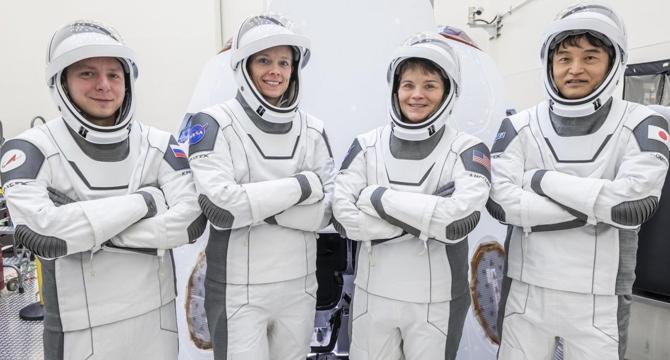
Image Credit: Digitaltrends
SpaceX Crew-10 astronauts’ journey to orbit starts now (sort of)
- SpaceX's Crew-10 astronauts have entered quarantine before their journey to the International Space Station (ISS).
- The quarantine is to ensure the crew don't carry illnesses to the ISS and they receive vaccinations against common diseases.
- The Crew-10 members will spend approximately six months aboard the space station, conducting research and spacewalks.
- Upon returning, Crew-9 astronauts Nick Hague and Suni Williams will also head home after their extended stay.
Read Full Article
6 Likes
For uninterrupted reading, download the app